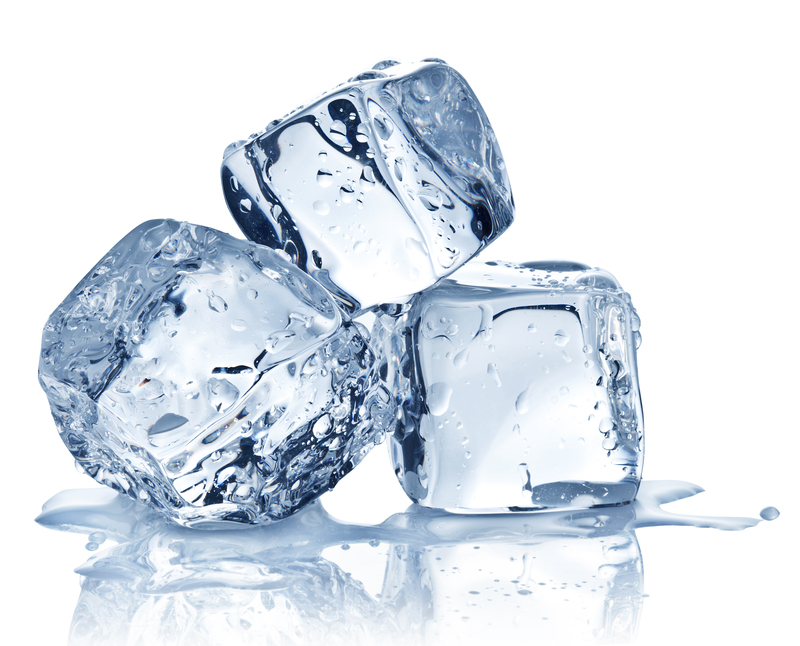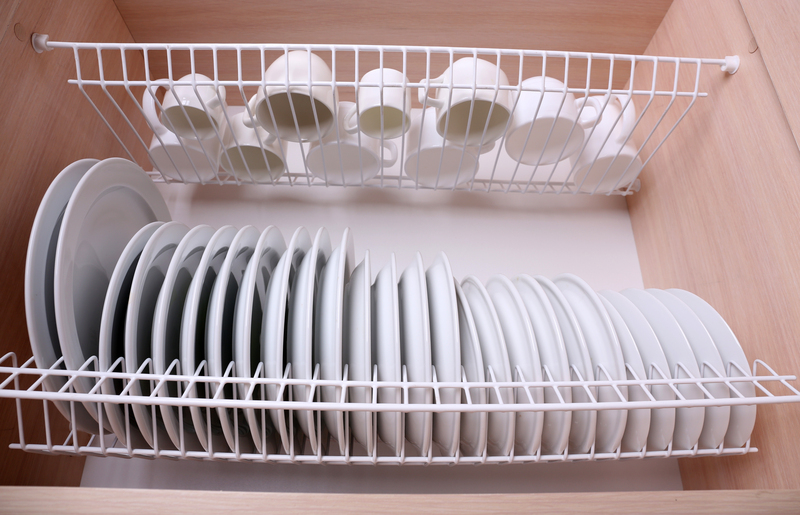Elevate Your Kitchen Cleanliness: Bid Grease Goodbye on Enamel Oven Trays
Posted on 07/06/2025
Elevate Your Kitchen Cleanliness: Bid Grease Goodbye on Enamel Oven Trays
Maintaining a spotless kitchen is a goal all home cooks aspire to achieve, yet the persistent challenge of grease buildup on enamel oven trays often stands in the way. These indispensable kitchen tools are not only essential for baking and roasting but are also susceptible to stubborn grease stains, baked-on food, and accumulating grime that can affect both performance and aesthetics. This comprehensive guide will reveal effective strategies to bid grease goodbye on enamel oven trays, equipping you with tips, techniques, and maintenance routines to keep your kitchen shining and hygienic.

Why Prioritize Clean Enamel Oven Trays?
Enamel oven trays are prized for their durability and non-stick qualities, but continuous exposure to high temperatures and greasy foods can diminish their appeal over time. Left unattended, grease buildup can result in:
- Unpleasant odors and smoke during use
- Bacterial growth and potential health hazards
- Decreased oven performance and uneven cooking
- Permanent stains that mar the tray's appearance
By ensuring your enamel oven trays remain spotless, you contribute to both food safety and the visual appeal of your kitchen.
Understanding Grease Accumulation on Enamel Oven Trays
Before diving into the how-to's, it's crucial to understand why grease buildup is a recurring issue on these trays. Enamel-coated trays feature a glassy, non-porous surface, but repeated exposure to oils, sauces, and baked-on residue can eventually breach these defenses.
Common causes of grease on enamel oven trays include:
- Baking fatty foods (like meats, pastries, or cheese-laden dishes)
- Using excessive cooking oil or butter
- Not cleaning trays promptly after use
- Improper cleaning methods that leave residues behind
Understanding the origins of grease helps shape effective cleaning strategies that truly make a difference.
Are Enamel Oven Trays Different From Other Trays?
Compared to untreated metal or glass bakeware, enamel-coated trays resist rust and facilitate easier cleaning. However, they are still vulnerable to damage from abrasive tools or harsh chemicals, which is why it's important to choose the right cleaning approach tailored to enamel surfaces.
Essential Tools and Materials for Grease-Free Enamel Oven Trays
To elevate your kitchen cleanliness, assembling effective cleaning aids is half the battle won. Here are the must-have items for tackling stubborn grease:
- Baking soda -- For gentle abrasion that won't harm enamel
- White vinegar -- Natural degreaser and disinfectant
- Lemon juice -- Cuts through grease and adds a fresh scent
- Dishwashing liquid -- Removes everyday grease residues
- Soft sponges or microfiber cloths -- For non-scratch cleaning
- Plastic or silicone scrapers -- To lift stuck-on bits without scraping enamel
- Hot water -- Assists in loosening greasy buildup
Each of these materials plays a unique role, helping you say goodbye to grease on enamel oven trays efficiently and safely.
Step-by-Step Guide: How to Clean Grease From Enamel Oven Trays
1. Immediate Rinse After Use
One of the best habits is to rinse the enamel oven tray with hot water immediately after use. This helps prevent food and grease from hardening on the surface. Use a soft sponge with dishwashing liquid for a quick clean if time permits.
2. Baking Soda Paste Soak
For more stubborn grease stains, make a paste using baking soda and water:
- Mix three parts baking soda with one part water to form a thick paste.
- Spread the paste evenly over the greasy areas of the enamel oven tray.
- Let it sit for at least one hour -- overnight for tougher grime.
- Gently scrub with a soft sponge or microfiber cloth and rinse thoroughly.
This gentle abrasive action helps remove tough grease without scratching the enamel coating.
3. Vinegar and Lemon Juice Magic
For an eco-friendly approach, combine white vinegar and lemon juice:
- Fill the oven tray with hot water, a cup of white vinegar, and the juice from half a lemon.
- Let it soak for 30-60 minutes. The natural acids will break down grease and lift stains.
- Drain and scrub gently with a soft sponge.
This technique is not only effective in removing grease but also leaves your kitchen smelling wonderfully fresh.
4. Using Commercial Enamel-Friendly Degreasers
If you need to bid grease goodbye quickly, opt for a commercial degreaser specifically designed for enamel trays. Always check that the product is enamel-safe before use and follow the manufacturer's instructions closely.
- Apply the degreaser to the tray surface.
- Let it sit as directed (usually 10-15 minutes).
- Wipe clean with a damp, soft sponge or cloth.
Avoid products containing harsh chemicals or abrasive grit, as these can damage the enamel's glossy finish.
5. Stubborn Stain Solutions
For particularly tough, baked-on spots, use a plastic or silicone scraper to lift residue gently. Never use steel wool or metal tools, as they can chip or scratch the enamel surface, shortening your tray's lifespan.
6. Rinsing and Drying Properly
After cleaning, rinse the tray thoroughly with warm water to remove any cleaning residues. Dry immediately with a clean towel or microfiber cloth to prevent water spots or potential rust along any exposed edges.
Advanced Maintenance Tips for Lasting Enamel Oven Tray Cleanliness
Want to keep your enamel oven trays looking like new? Beyond cleaning, consistent maintenance will help you elevate your kitchen cleanliness long-term:
- Line trays with baking paper or silicone mats during roasting to catch drips and reduce direct tray contact with sticky foods.
- Avoid cooking extremely acidic or sugary foods directly on the enamel tray, as these can cause stubborn stains.
- Hand-wash rather than dishwashing if possible, as continuous use of a dishwasher may lead to chips in the enamel coating over time.
- Inspect trays frequently for chips or cracks -- replace if enamel has been compromised to avoid contamination.
How Often Should You Clean Your Enamel Oven Trays?
For the best results and to ensure superior kitchen hygiene, clean your enamel oven trays after every use. For deep cleaning, perform a more thorough degreasing once a week if you use your oven frequently.
Common Mistakes to Avoid When Cleaning Enamel Oven Trays
Not all cleaning methods are suitable for delicate enamel surfaces. Avoid these pitfalls to keep your trays in top condition:
- Using abrasive scouring pads or steel wool
- Cleaning with harsh, bleach-based chemicals
- Letting grease solidify for days before cleaning
- Attempting to chip off hard residue with metal utensils
- Soaking for excessive periods, which may weaken any exposed edges of enamel
Stick to gentle, non-scratch methods designed for enamel oven trays, and always consult manufacturer care instructions if unsure.
DIY Cleaning Solutions: Grease Removal for Enamel Oven Trays
Prefer a homemade approach? These DIY degreasing solutions are perfect for eco-conscious home cooks:
A. Baking Soda & Vinegar Fizz
- Generously sprinkle baking soda over the tray.
- Spray or drizzle white vinegar on top -- it will fizz and bubble.
- Let it sit for 20 minutes, then wipe and rinse for a grease-free shine.
B. Lemon & Salt Scrub
- Cut a lemon in half and dip it in coarse salt.
- Scrub gently over greasy stains. The lemon's acid and salt's abrasion lift grease while being gentle on enamel.
C. Natural Enzyme Cleaners
- If available, use a plant-based enzyme cleaner. These formulas digest organic grease residues, leaving trays fresh and safe for food contact.
The Benefits of Spotless Enamel Oven Trays
Maintaining grease-free enamel oven trays offers more than just a visual upgrade:
- Better-tasting food thanks to neutral, clean surfaces that won't contaminate flavors
- Prolonged lifespan of your trays due to less abrasive cleaning and rust formation
- Improved kitchen aesthetics -- no more unsightly brown or black grease spots
- Reduced cross-contamination and better food safety for your family
- Easier, shorter cleanup times thanks to an established cleaning routine

Frequently Asked Questions: Keeping Enamel Oven Trays Clean
Can You Put Enamel Oven Trays in the Dishwasher?
While some enamel trays are labeled dishwasher safe, frequent high-heat dishwasher cycles may eventually dull or chip the glaze. For optimal grease removal and tray care, hand-washing is often best.
How Do You Remove Burnt-On Grease From Enamel Oven Trays?
Soak the tray in a hot water and baking soda solution for several hours or overnight. Use a soft sponge to gently lift burnt-on particles. For persistent areas, a plastic scraper can be used carefully.
Will Vinegar Damage Enamel Olive Oven Trays?
No, vinegar is safe for enamel coatings and is an excellent natural degreaser. Just avoid using undiluted vinegar for extended periods, and always rinse thoroughly after use.
Is It Safe to Use Oven Cleaners?
Conventional oven cleaners are often too harsh for enamel surfaces. Only use enamel-approved products to avoid etching, pitting, or discoloration.
Conclusion: Transform Your Kitchen Routine -- Say Goodbye to Grease!
Elevating your kitchen cleanliness starts with tackling one of cooking's most stubborn challenges: grease on enamel oven trays. By incorporating quick post-cook rinses, gentle natural agents, and regular maintenance, you'll enjoy sparkling clean trays, tastier food, and a safer cooking environment. Make these strategies part of your kitchen ritual and experience the satisfaction of truly grease-free, gleaming enamel oven trays -- your secret to an elevated, inviting kitchen space.
If you've found these tips helpful, share this article with fellow food lovers and never let stubborn grease cloud your kitchen confidence again!




